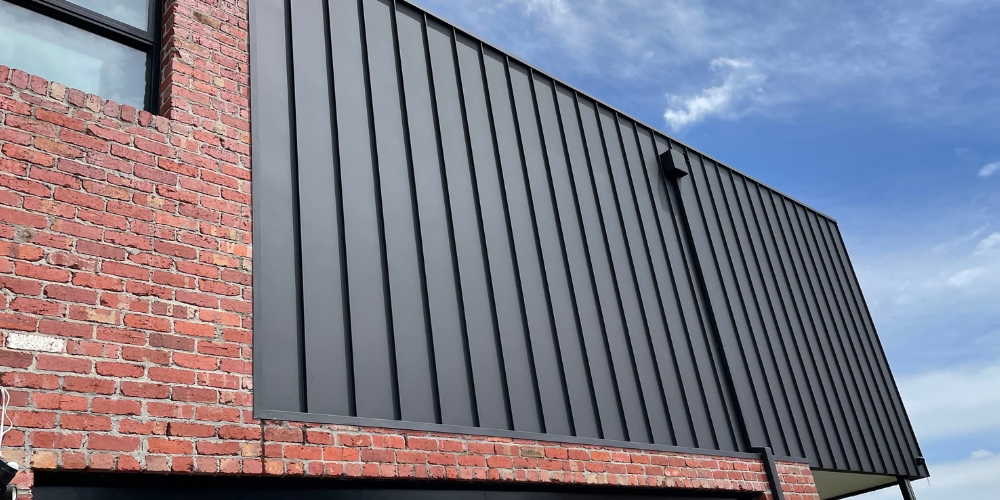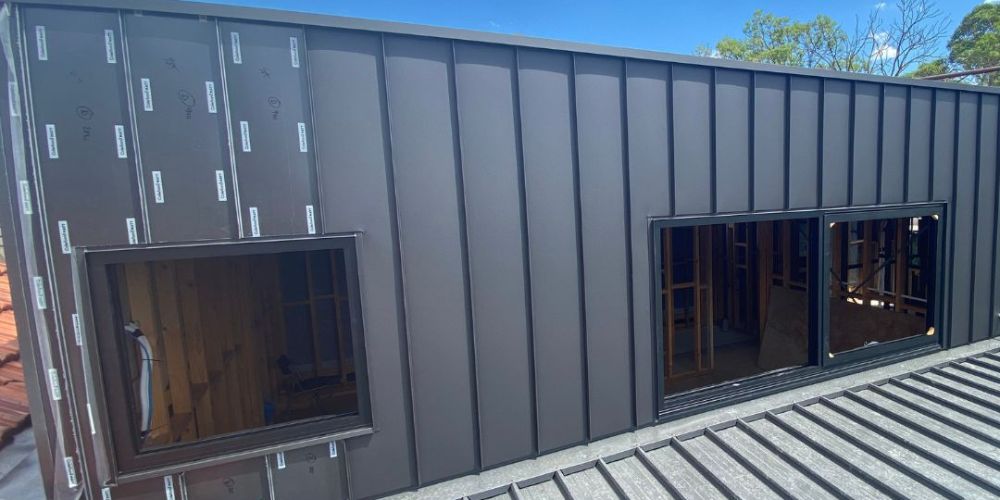Different Types of Facade Cladding Materials for Homeowners and Their Benefits
Facade is the face of your home – it’s the first thing visitors see and plays a significant role in defining your property’s overall appearance and curb appeal. But beyond its visual impact, facade cladding serves as a protective barrier, shielding your home from the elements and enhancing its structural integrity.
As a roofing and cladding expert based in Melbourne, I understand the importance of choosing the right materials to protect and enhance your home. Your facade needs protection, too, and installing cladding is one of the best options.
But which materials are the best to use to create cladding for your facade? Let’s find out!

Lance Mathews
In This Article

What is Facade Cladding, and Why is it Necessary?
Facade cladding refers to the external covering or skin of a building’s facade, which serves aesthetic and functional purposes. The outer layer protects the building from external elements such as weather, UV radiation, wind, and moisture while contributing to its overall appearance.
Protection
The facade covering protects the building from weather-related hazards like rain, snow, hail, and UV rays. It increases the longevity of the building and aids in maintaining structural integrity by minimising temperature changes and moisture intrusion.
Insulation
Thermal insulation is a feature of many cladding materials, which helps control indoor temperature and lower energy usage. This is particularly crucial in areas with harsh weather since adequate insulation can save heating and cooling expenses while improving comfort.
Aesthetic Enhancement
Facade cladding is essential in establishing a building’s visual attractiveness beyond its functional use. To create the desired aesthetic effect, architects and homeowners can customise the outside appearance by selecting from several materials, colours, textures, and finishes.
Maintenance
Because facade cladding shields the underlying structure from dirt, debris, and pollution, making maintenance and cleaning tasks easier. Depending on the material selected, cladding may require less maintenance, which lowers the need for regular repairs and upkeep.
Durability
Top-notch cladding materials resist harsh elements of outside exposure, such as dampness, UV rays, and temperature swings. Homeowners may guarantee long-term protection and reduce the need for expensive repairs or replacements by investing in sturdy cladding materials.

Different Facade Cladding Materials (and their Benefits)
When it comes to enhancing the exterior of your home, choosing the right facade cladding material is crucial. Different materials offer unique benefits, from durability and aesthetics to energy efficiency and ease of maintenance. Let’s explore some popular facade cladding materials and their advantages for homeowners:
Brick
- Durability: Bricks have a reputation for being strong and resilient, needing little upkeep over an extended period.
- Classic Aesthetic: Brick cladding gives structures a classic, ageless appearance that improves visual attractiveness.
- Low Maintenance: Brick cladding requires little maintenance after installation, saving time and money on upkeep expenses.
Vinyl:
- Affordability: Vinyl cladding is frequently a more affordable alternative for homeowners than other materials.
- Simple Installation: Vinyl panels require less labour and installation time because they are lightweight and simple.
- Variety of Styles: Vinyl cladding is adaptable and customisable, coming in a broad array of hues and textures to complement many architectural styles.
Wood:
- Natural Beauty: Wood cladding gives buildings character and warmth, making them comfortable and welcoming.
- Insulation: Wood’s natural insulation helps control interior temperature and lower energy use.
- Eco-Friendly: Wood cladding is sustainable and environmentally beneficial when obtained properly because it comes from renewable resources.
Fiber Cement
- Strength and Durability: Fiber cement cladding is strong and resistant to damage from moisture, fire, insects, and rot, ensuring durability in various environments.
- Fire Resistance: Fiber cement is non-combustible, providing added safety and protection against fire hazards.
- Low Maintenance: With minimal upkeep, fibre cement cladding offers homeowners long-term cost savings and peace of mind.
Composite
- Versatility: Composite cladding combines the benefits of different materials, offering a versatile and customisable solution for various architectural styles.
- Diverse Design Options: Composite cladding is available in various colours, textures, and finishes, allowing homeowners to achieve their desired aesthetic without compromising performance.
- Durability: Composite materials are engineered for strength and resilience, providing long-lasting protection against the elements while maintaining their appearance over time.
Factors to Consider When Choosing Facade Cladding Materials
When selecting facade cladding materials for your home, you must consider various factors to make the right choice.
Let’s dive into these factors together to help you find the perfect cladding solution that fits your needs and style preferences.
Climate and Weather Conditions
Consider your local climate, which includes temperature changes, precipitation levels, and exposure to sunlight and wind. Choose cladding materials that can resist local weather conditions and offer enough protection from moisture, UV radiation, and high temperatures.
Budget Constraints
Determine your facade cladding budget, including material costs, installation fees, and long-term maintenance requirements. Compare the costs of various materials and select solutions that meet your budget without sacrificing quality or performance.
Maintenance Requirements
Determine the amount of care each cladding material requires over time. Some materials, such as vinyl and metal, are low-maintenance and require occasional cleaning. In contrast, others, like wood, may require frequent staining or sealing to keep their beauty and longevity.
Aesthetic Preference
Consider your home’s architectural style and personal aesthetic when choosing cladding materials. Choose materials that suit the overall design theme and improve the visual attractiveness of your home. Experiment with different colours, textures, and finishes to find your facade’s perfect look.
Environmental Considerations
Consider the environmental impact of each cladding material, including its source, manufacturing process, recyclability, and energy efficiency. Select sustainable options that reduce environmental impact and promote energy conservation, such as recycled materials or environmentally friendly alternatives.
Installation Requirements
Consider the complexity and simplicity of installation of each cladding material, considering labour costs, needed skill level, and compatibility with existing building structures. Choose materials that professionals or do-it-yourself enthusiasts can easily and effectively install.
Longevity and Durability
Assess each cladding material’s durability and longevity, considering aspects like wear and tear resistance, impact resistance, and insect or environmental damage susceptibility. Choose durable and structurally sound materials to ensure your facade’s lifespan.
Frequently Asked Questions
The best facade cladding material depends on your budget, aesthetic preferences, climate, and maintenance requirements. Consult a professional to assess your needs and determine the most suitable option for your home.
The complexity of installation varies depending on the material and your level of expertise. While some materials, like vinyl, may be suitable for DIY installation, others, such as fibre cement or composite, may require professional assistance to ensure proper installation and long-term performance.
Yes, the type and quality of facade cladding can influence the perceived value of your property. High-quality, visually appealing materials like brick or natural wood may enhance curb appeal and attract potential buyers, potentially increasing resale value compared to less durable or outdated materials.
Depending on the material, it may be possible to alter the colour or appearance of facade cladding through methods like painting, staining, or applying finishes. However, some materials may require specific preparation or treatments for successful colour changes. Hence, it’s essential to consult with professionals before attempting alterations.

